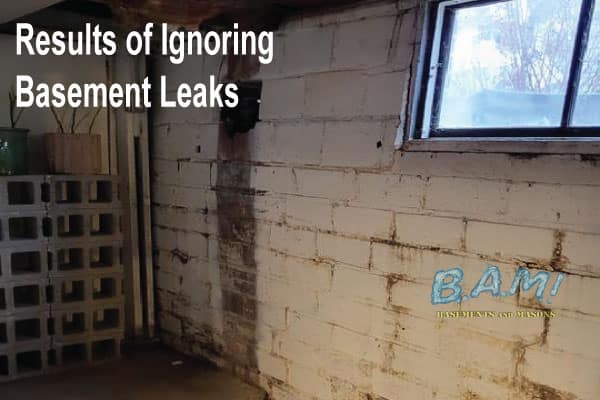Little Known Facts About Best Basement Waterproofing.
Little Known Facts About Best Basement Waterproofing.
Blog Article
Top Guidelines Of Best Basement Waterproofing
Table of ContentsThe 10-Minute Rule for Best Basement WaterproofingThe Best Strategy To Use For Best Basement WaterproofingGetting The Best Basement Waterproofing To WorkUnknown Facts About Best Basement WaterproofingThe Buzz on Best Basement Waterproofing
What triggers water damages concerns in your cellar? Right here are a few things to seek: when the foundation of your home is endangered, water is excellent at creeping in between small fractures and holes and triggering damages. Pipes that line the inside of your walls are just one example of where water damages can happen.The dirt and ground of your home is very essential. If there is way too much water surrounding your home, nonetheless, it can push the soil right into your home and cause the seals of your cellar to end up being compromised. Best Basement Waterproofing. when you see excess water in areas where it should not be, that is a very excellent sign that you have a problem
Concrete waterproofing coverings are cement-like; once completely dry, they stick completely to concrete and stonework wall surfaces. You use the finish with a heavy brush made with bristles swirled during application for an appealing, finished appearance. Concrete water resistant finishings can not be applied to previously repainted surface areas Silicate-based concrete sealants, also understood as densifiers, are also appropriate just for wall surfaces that haven't been repainted or sealed.
Because these are penetrating sealers, they can't exfoliate or peel, and you can have paint used over them. The American Eagle group might uncover extra complex causes for your wetness problems; there are additional remedies available. Plastic sheets and panels may be combined with interior cellar drainage systems. They do not quit water from making it through the wall, yet they do stop it from spoiling points in the basement.
The Facts About Best Basement Waterproofing Uncovered
A sump pump is needed to relocate water out of your cellar. In order to effectively suggest a remedy for your wet cellar, call American Eagle for a no-obligation go to. Our technicians will certainly have the ability to explain which remedies are alternatives for your home. Why should you waterproof your basement? Right here are a couple of things the professionals can mount to aid the waterproofing process: this is created for the walls of your cellar (Best Basement Waterproofing).
Basement waterproofing is a terrific way to obtain in advance of possible water try these out damage that might come your way.
Best Basement Waterproofing Fundamentals Explained
When it comes to protecting your home, one of one of the most vital steps you can take is basement waterproofing. A dry basement not just makes certain a safe and healthy setting for you and your family, yet it additionally aids to stop expensive water damage and mold growth. In this blog site message, we will go over the significance of cellar waterproofing, the advantages it offers, and just how you can tackle safeguarding your room.
By purchasing basement waterproofing currently, you can aid to ensure that your home keeps its worth and appearance in time. Another advantage of basement waterproofing is that it can assist to lower your power bills. A damp cellar can add to higher degrees of humidity check my source in your home, which can make your HVAC system job harder to preserve a comfortable temperature.
When it comes to basement waterproofing, there are numerous techniques that can be used to keep water out of your space. These include indoor sealers, outside waterproofing membrane layers, and water drainage systems. The most effective approach for your cellar will certainly depend upon variables such as the degree of water intrusion, the problem of your structure, and your spending plan.
In conclusion, cellar waterproofing is an important step in securing your home from water damages, mold and mildew growth, and various other concerns. By buying basement waterproofing, you can make sure that your room stays dry, safe, and healthy for you and your family members. Not only does basement waterproofing offer satisfaction and defense for your home, yet it can also boost its value and save you money on energy prices in the future.
The smart Trick of Best Basement Waterproofing That Nobody is Discussing
Inside sealants are a kind of basement waterproofing approach that entails applying a sealant to the inside of the basement walls and floors. Water can permeate into a cellar with cracks, spaces, or permeable concrete, especially in areas where there is high groundwater or bad drain. This can cause water damages and mildew development, in addition to damage to the structure and structural stability of the structure.
The sealant produces an obstacle that avoids water from seeping via the concrete. This technique is only reliable our website for minor water damages and does not resolve the underlying causes of the dampness. The main source of the demand for outside cellar waterproofing is water seepage from the beyond the foundation walls.
It is a reliable solution for preventing water damages and maintaining the architectural integrity of the building. It can be costly and disruptive to mount, as it needs excavation around the structure and may entail landscape design and other repairs once the waterproofing is full. This approach is the most trustworthy and long-lasting solution for stopping water infiltration in the cellar.
The Facts About Best Basement Waterproofing Uncovered

Report this page